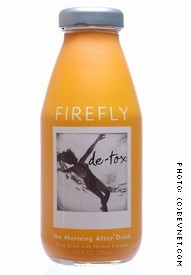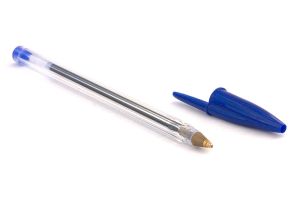 Last month I went to a great event at Westminster Reference Library to hear the story of Firefly Tonics from co-founder of the business Harry Briggs
Last month I went to a great event at Westminster Reference Library to hear the story of Firefly Tonics from co-founder of the business Harry Briggs
Harry and Marcus Waley-Cohen were friends at school and “We’d always thought one day we’d start a business – whenever we had A-level coursework to do, we found ourselves bouncing (mostly silly) business ideas around instead.”
After university they were both working for large consulting firms when they were given the opportunity to market at Japanese water that claimed to cure all ills.
“We didn’t think much of the water, but it did get us thinking – “what if we could make a drink that was effective, yet completely healthy and natural?” Surely nature could do a better job than those chemically-infused sugary energy drinks…”
They found two top UK ‘serious’ herbalists (by searching Amazon for authors) and persuaded them to help develop healthy herbal drinks.
From original idea to launch took just over a year due to delays with the bottle supplier and the partners biggest arguments were over the design of the product rather than the product itself. Five years later they have sold 9 million bottles.
Harry listed some lessons learnt, most of which will be relevant to others starting out on their first business venture.
1. Ask your friends – Harry and Marcus had a long list of possible names for the company, but when they circulated the list to their friends, Firefly came back as the clear winner.
2. Talk and listen to your customers – Firefly make an effort to personalise their dialog with customers and use bespoke emails.
3. Dare to be different – it enables you to stand out in a crowded market-place.
4. All publicity is good publicity (well, almost all).
5. Stand up for a cause – Firefly chose to support independent cafes (who were also more likely to stock their products), creating a virtuous circle.
6. Be authentic and candid – don’t hide your ‘sins’
7. Involve customers in the company – all the photos on the front of their bottles are sent in by the public.
8. Your product is your best marketing – Giving your product away costs a lot less than producing brochures and advertising.
9. Your first customers are the most important ones
10. Sometimes it is better to say no – Firefly turned said ‘no’ to both Asda and Boots
11. You can be global earlier than you might think – their business plan had an international component in year three, but due to intense demand they are now a few locations in nearly 40 countries.
“The company values:
Values… When you try and put them into words you start sounding like a Life Insurance company. But they’re important. So here goes…
1. To create delicious, healthy, stylish and innovative drinks that help people get the most out of life, naturally
2. To build a company that values creativity, honesty, courage and a sense of humour
3. To develop a brand that’s adventurous and authentic, standing up for what we believe in
4. To work in a challenging, fun and inclusive environment where nobody employed by us ever wakes up and thinks, “I don’t want to go to work today”
5. To leave the ostriches to their own devices, get our heads out of the sand and go and stand on top of a mountain with our friends… playing frisbee. (Don’t ask…)”
 The other winning approach is to produce a design classic first time out. A case in point is the Bic Crystal ballpoint pen. Designed by Marcel Bich, more than 100 billion Bic pens have been sold since 1950 – enough to draw a line to the moon and back more than 320,000 times, according to the Observer newspaper. The only variation on the original design was to create a hole in the cap to prevent choking.
The other winning approach is to produce a design classic first time out. A case in point is the Bic Crystal ballpoint pen. Designed by Marcel Bich, more than 100 billion Bic pens have been sold since 1950 – enough to draw a line to the moon and back more than 320,000 times, according to the Observer newspaper. The only variation on the original design was to create a hole in the cap to prevent choking.


 their core areas of business have leapt by 75 per cent to just under £2million. Demand for the new maintenance business and tanker work has increased, bringing total turnover for 2005 to £2.5m.
their core areas of business have leapt by 75 per cent to just under £2million. Demand for the new maintenance business and tanker work has increased, bringing total turnover for 2005 to £2.5m.